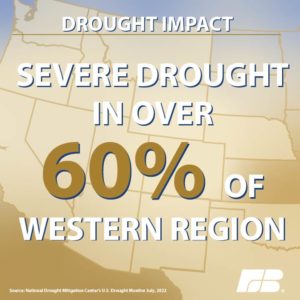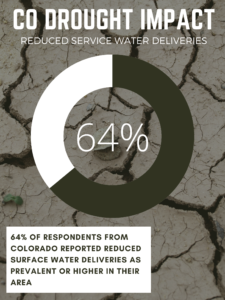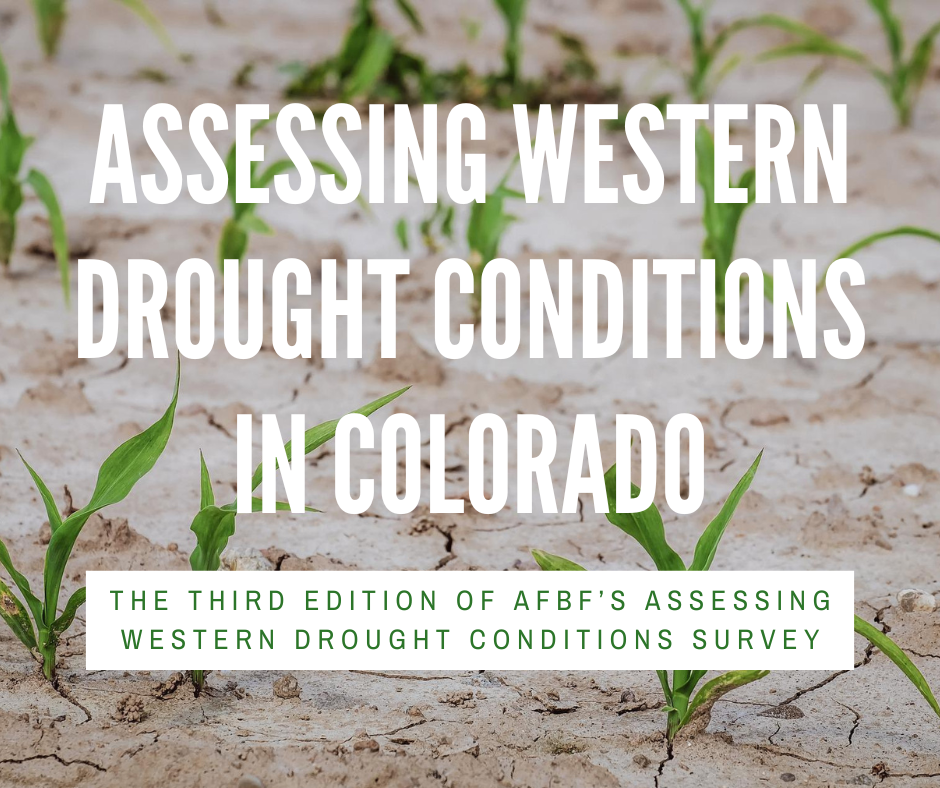Western drought conditions continue to affect Colorado farmers and ranchers. The third edition of AFBF’s Assessing Western Drought Conditions survey reveals the extent of drought impacts across Western, Central, and Southern Plains states. Farmers and ranchers in Colorado and beyond are struggling to meet their bottom lines, provide food for ever-increasing demands, and keep their products affordable. The survey results explain these realities on the farm-level, as producers are struggling with reduced yields, reducing flock and herd sizes, and removing multi-year crops and orchard trees from their operations.
 The survey, which was also conducted in June 2021 and October 2021, included more than 600 responses from county and state Farm Bureau leaders, staff, and members in 15 states from Texas to North Dakota to California. Together, these states contribute nearly half of the U.S.’s agricultural production by value.
The survey, which was also conducted in June 2021 and October 2021, included more than 600 responses from county and state Farm Bureau leaders, staff, and members in 15 states from Texas to North Dakota to California. Together, these states contribute nearly half of the U.S.’s agricultural production by value.
Across Colorado, respondents expected average crop yields to be down 35% this year because of drought conditions. Increasing 10% from last year, 85% of Colorado respondents rated a reduction in harvest yields as prevalent or higher, while half of the respondents reported prevalence of selling off portions of herds or flocks. A quarter of Colorado respondents reported that wildfires have contributed to crop losses and herd sell-offs in their area, and 100% of surveyed individuals unanimously noted increased feedlot costs as attributed to drought conditions.

In addition to increased costs, reduced yields, and diminished herds, nearly three out of four Colorado respondents reported reduced surface water deliveries as prevalent or higher in their area. More and more farmers and ranchers are having to change their crops and rely on rain, as explained by one Colorado survey reply: “I switched spring crops to more drought tolerant crops, but will still have failures if it does not rain soon.”
On average, respondents from Colorado expected their farm related revenue to be down 40% from usual because of drought conditions in 2022. The impacts of the western droughts extend beyond the farm too, as consumers and global food supplies continue to face shortages and increasing costs. While there is no simple solution to drought mitigation, long-term solutions must be discussed and implemented to ensure that America’s agriculturalists can continue to provide safe, affordable, and abundant food for the nation and beyond.




